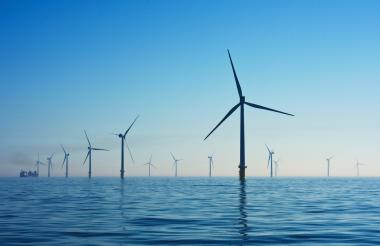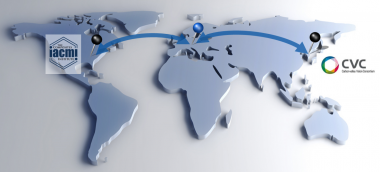Pyrolysis processes promise sustainable recycling of fiber composites
Wind turbines typically operate for 20 to 30 years before they are undergoing dismantling and recycling. However, the recycling of fiber composites, especially from the thick-walled rotor blade parts, has been inadequate until now. The prevailing methods involve thermal or mechanical recycling. For a sustainable and holistic recycling process, a research consortium led by Fraunhofer IFAM is pooling their expertise to recover the fibers through pyrolysis. Subsequent surface treatment and quality testing of the recyclates allow for them to be used again in industry.
Today, the vast majority of wind turbines can already be recycled cleanly. In the case of rotor blades, however, recycling is only just beginning. Due to the 20-year operation period and the installation rates, the blade volume for recycling will be increasing in the coming years and decades. In 2000, for example, around 6,000 wind turbines were erected in Germany, which now need to be fed into a sustainable recycling process. In 2022, about 30,000 onshore and offshore wind turbines with a capacity of 65 gigawatts were in operation in Germany alone.
As wind energy is the most important cornerstone for a climate-neutral power supply, the German government has set itself the goal of further increasing its wind energy capacity by 2030 by installing larger and more modern turbines. Rotor blades will become longer, the proportion of carbon fibers used will continue to increase - and so will the amount of waste. In addition, the existing material mix in rotor blades is expected to increase in the future and precise knowledge of the structure of the components will become even more important for recycling. This underscores the urgency of developing sustainable processing methods, especially for recycling the thick-walled fiber composites in the rotor blades.
Economic and ecological recycling solution for fiber composites on the horizon
Rotor blades of wind turbines currently up for recycling consist of more than 85 percent of glass- and carbon-fiber-reinforced thermosets (GFRP/CFRP). A large proportion of these materials is found in the flange and root area and within the fiber-reinforced straps as thick-walled laminates with a wall thicknesses of up to 150 mm. Research into high-quality material fiber recycling as continuous fibers is of particular importance, not only because of the energy required for carbon fiber production. This is where the project "Pyrolysis of thick-walled fiber composites as a key innovation in the recycling process for wind turbine rotor blades" – "RE SORT" for short – funded by the German Federal Ministry of Economics and Climate Protection comes in. The aim of the project team is the complete recycling by means of pyrolysis.
A prerequisite for high-quality recycling of fiber composites is the separation of the fibers from the mostly thermoset matrix. Although pyrolysis is a suitable process for this purpose, it has not yet gained widespread adoption. Within the project, the project partners are therefore investigating and developing pyrolysis technologies that make the recycling of thick-walled fiber composite structures economically feasible and are technically different from the recycling processes commonly used for fiber composites today. Both quasi-continuous batch and microwave pyrolysis are being considered.
Batch pyrolysis, which is being developed within the project, is a pyrolysis process in which the thermoset matrix of thick fiber composite components is slowly decomposed into oily and especially gaseous hydrocarbon compounds by external heating. In microwave pyrolysis, energy is supplied by the absorption of microwave radiation, resulting in internal rapid heat generation. Quasi-continuous batch pyrolysis as well as microwave pyrolysis allow the separation of pyrolysis gases or oils. The planned continuous microwave pyrolysis also allows for the fibers to be preserved and reused in their full length.
How the circular economy succeeds - holistic utilization of the recycled products obtained
In the next step, the surfaces of the recovered recycled fibers are prepared by means of atmospheric plasmas and wet-chemical coatings to ensure their suitability for reuse in industrial applications. Finally, strength tests can be used to decide whether the recycled fibers will be used again in the wind energy industry or, for example, in the automotive or sporting goods sectors.
The pyrolysis oils and pyrolysis gases obtained in batch and microwave pyrolysis are evaluated with respect to their usability as raw materials for polymer synthesis (pyrolysis oils) or as energy sources for energy use in combined heat and power (CHP) plants (pyrolysis gases).
Both quasi-continuous batch pyrolysis and continuous-flow microwave pyrolysis promise economical operation and a significant reduction in the environmental footprint of wind energy. Therefore, the chances for a technical implementation and utilization of the project results are very good, so that this project can make a decisive contribution to the achievement of the sustainability and climate goals of the German Federal Government.
Windkraft Fraunhofer-Institut für Fertigungstechnik und Angewandte Materialforschung IFAM Recycling Pyrolyse fiber composites Composites
Fraunhofer-Institut für Fertigungstechnik und Angewandte Materialforschung IFAM



